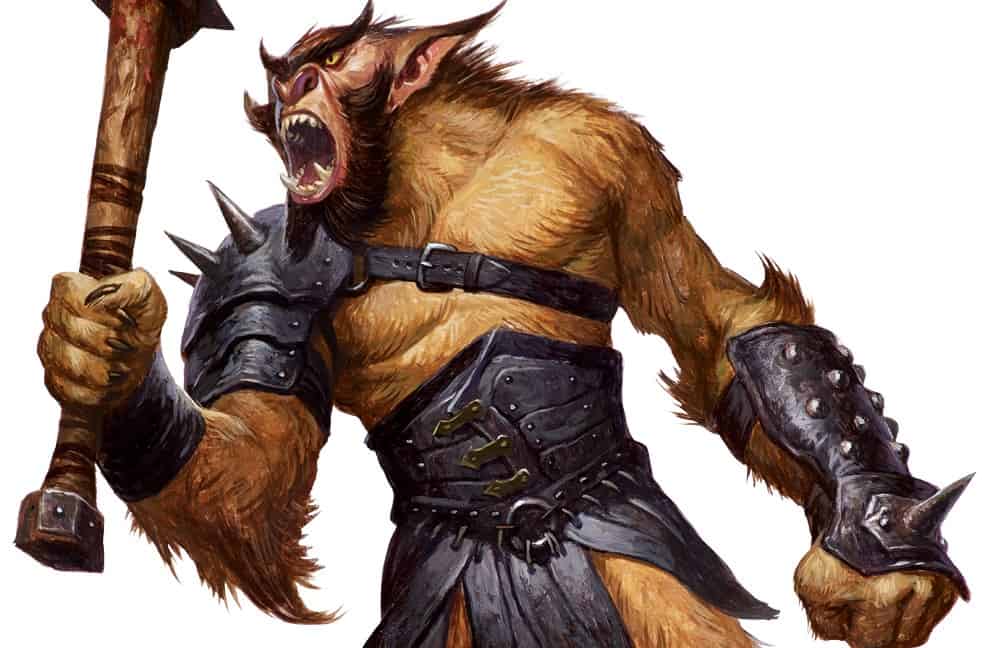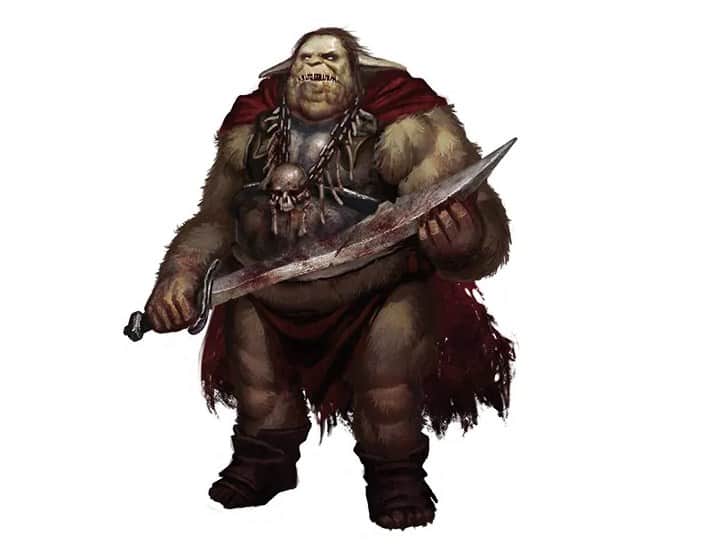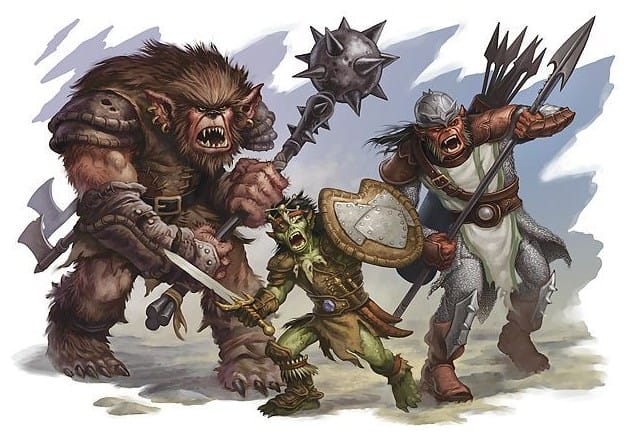Monsters are interesting creatures in the world of D&D. They are usually thrown in the DnD campaign to serve as enemies for the party. In the players’ eyes, they are villains sworn to defeat the party whatever the cost may be. However, not much thought is put into why these creatures are doing this. If they are less intelligent, they are probably attacking because of instinct; they feel like they are in danger.
Some monsters are intelligent enough to make decisions on their own based on logical thinking. They are probably serving the big bad evil guy (commonly abbreviated as the BBEG) because they need to support their family. Or perhaps they have been put into a difficult situation where they have no other choice but to fight you. It should be worth noting for a DM that a game of D&D is not always black and white.
Sometimes, they are intelligent enough to be a part of an adventuring party. Their ambitions, dreams, and wills are bigger than their usual kind makes, and they would need to be cooperative with others to achieve them. This DnD Bugbear Guide will tackle a monster of the same caliber: Bugbears.
It is like bugbears to be chaotic and evil. It is said that these creatures are born for battle and mayhem and that they bully those weaker than themselves. However, they can also have a change of heart by some divine intervention or eye-opening experience. Will you put a bugbear as a villain in your D&D story? Or do you want to play as a bugbear? This guide will handle each of those discussions.
What is a Bugbear in D&D?

Bugbears are hairy humanoid creatures that are often tall and hulking. They are cousins of hobgoblins and goblins, yet bugbears love to enslave and bully them into giving them what they want. They are known to be unreliable allies and bloodthirsty monsters. They worship a lesser god called Hruggek, and they believe that when they die, their spirit will have a chance to fight alongside this deity.
When they have no hobgoblins or goblins to bully around and enslave, they form loose warbands led by the fiercest bugbear in the pack. Also, despite their hulking presence, they are surprisingly stealthy. They love to ambush their victims yet flee when they think they are outmatched or outnumbered. They are dependable mercenaries when paid well but they know no loyalty when their life is on the line.
They can be thrown into the story as an adversary to the party. They can be owners of abandoned keeps that the party must get into. Or they can be hired by the BBEG to ambush you. Yet if you want to play as a bugbear, you definitely can thanks to Volo’s Guide to Monsters. Your character can subvert these expectations if you want to, given a reasonable story behind it.
Bugbear stat block (as a monster)
Bugbears are not rare creatures, so you can put one in your campaign. They are usually in the company of their cousins, albeit as an enslaver or a leader. When you plan to make your players fight or interact with a bugbear, you would need its stats. Thus, below are the necessary details that you need. Note that this information is taken from the Monster Manual on page 33.
Key Information and Defensive Statistics
First, below contains the key information of the bugbear along with their defensive stats such as their Armor Class (or AC) and their HP.
- Bugbear
- Size: Medium humanoid (goblinoid)
- Alignment: Chaotic Evil
- Environment: Forest, Grassland, Underdark
- Armor Class: 16 (with hiding armor and shield)
- Hit Points: 27 (5d8 + 5)
- Speed: 30 ft.
- Challenge Rating: Challenge 1 (200 XP)
Alignment helps in determining how a bugbear should normally act, but keep in mind that it is merely a guide; you can deviate on how the bugbear in your story acts. These creatures are normally found in forests, grasslands, or the Underdark, but again you can deviate from this. The armor class is the number in which attack rolls made against this creature should reach. You can use the bugbear’s average hit points of 27, or you can roll 5d8 + 5 for variety.
Challenge rating is a system in D&D 5th Edition that determines how hard a monster is to defeat given the number of players. There are tutorials on how you can calculate the challenge rating, but there are also easy tools that you can use to determine a monster’s or a pack of monster’s difficulty.
Here’s everything we know about the Bugbear Race in 5e.
Ability Scores and Proficiencies
The next details are the ability scores of the monster as well as their proficiencies. Note that the number outside the parenthesis is their ability score while the number inside the parenthesis is the score modifier.
| Strength | Dexterity | Constitution | Intelligence | Wisdom | Charisma |
| 15 (+2) | 14 (+2) | 13 (+1) | 8 (-1) | 11 (+0) | 9 (-1) |
Proficiencies
- Skills: Stealth (+6), Survival (+2)
- Senses: darkvision 60 ft., passive perception 10
- Languages: Common, Goblin
- Proficiency Bonus: +2
Bugbears are naturally stealthy, so they are proficient with their Stealth skill. They are also proficient in their Survival skill because they know how to survive in the wilderness. So, when a bugbear makes a Stealth check, they would add a +6 on their roll. For Survival checks, they would add a +2 on their roll. They can see in the darkness up to 60 ft. away, or 12 squares away based on standard battle map tile measurements.
They have a passive perception of 10, so if you want to sneak around a bugbear, your Stealth check would need to be equal to or higher than 10. Since bugbears are goblinoids, they know how to speak Goblin as well as Common. They have a proficiency bonus of +2, so their attack rolls made from weapons they are proficient in gain a +2.
Abilities and Actions

A bugbear has natural abilities that are relevant in the heat of the battle. These abilities as well as the possible actions a bugbear can make during combat are listed down below.
Abilities
- Brute: A bugbear’s successful melee weapon attack deals one extra die of its damage. Note that this is already reflected in the attacks below.
- Surprise Attack: When a bugbear is successful in attacking a creature during the first round of combat and the creature is surprised by the attack, the target suffers from an extra 7 (2d6) damage from the attack.
Actions
- Morningstar: The bugbear makes a melee weapon attack with a Morningstar.
- Add +4 to the attack roll
- Reach: 5 ft., one target
- Damage: 11 (2d8 + 2) piercing damage
- Javelin: The bugbear makes a melee or ranged weapon attack with a Javelin.
- Add +4 to the attack roll
- Reach: 5 ft. (as a melee attack) or 30/120 ft. (as a ranged attack), one target
- Damage: 9 (2d6 + 2) piercing damage as a melee attack; 5 (1d6 + 2) piercing damage as a ranged attack
Bugbear stat Block (as a race)
If you want to play as a bugbear, you definitely can! Monstrous characters can often provide good storytelling and roleplaying possibilities. You can come up with a backstory for your character on why such a monster wants to have a life of adventure. Perhaps the bugbear was raised by loving humans as an infant. Maybe they hit their head one day and decided to do good to the community. It is up to you to decide.
When you want to play as a certain race, you would need its building blocks (commonly referred to as the race’s stats) to build your character. Thus, listed below is the necessary information to start making your own bugbear character. This info comes from Volo’s Guide to Monster on page 119, so you can check there for the actual description of these abilities.
- Bugbear
- Ability Scores: When choosing this race, add +2 to your Strength ability score and +1 to your Dexterity ability score.
- Alignment: Because of their bloodthirsty nature, they are usually chaotic evil.
- Size: Bugbears are Medium creatures whose height ranges from 6 to 8 feet and whose weight ranges from 250 to 350 pounds.
- Darkvision: You can see in the dim light a distance of up to 60 ft. from you, or 12 squares in standard battle map tile measurement. You see in dim light as if it were bright light, and you see darkness as if it were dim light. When seeing in darkness, you cannot distinguish color, only in shades of black and white.
- Long-Limbed: When making a melee attack, your reach is increased by 5 ft. thanks to your long arms.
- Powerful Build: When determining carrying capacity as well as the weight you can push, drag, or lift, you count as one size larger.
- Sneaky: You are proficient in the Dexterity (Stealth) skill.
- Surprise Attack: Once per combat, you can deal an extra 2d6 damage when you successfully attack a creature by surprise. You can only do this on your first turn.
- Languages: You can speak, read, and write the Common and Goblin languages.
How to Fight a Bugbear

Bugbears are stealthy creatures; they have a +6 on their Stealth checks! So, you must be on high alert when you are expecting to fight a bugbear. In other words, you need to either actively look out for ambushes by rolling high Wisdom (Perception) checks, or you need to have an extremely high passive Perception. Another way to avoid ambushes is to take the Alert feat.
As stated in the Alert feat’s description in the Player’s Handbook on page 165, you have become always looking out for approaching danger, and you gain the following benefits:
- +5 bonus to initiative
- While conscious, you cannot be surprised
- Even when creatures are unseen by you, they do not gain an advantage on attack rolls against you
Moving on, bugbears wield two weapons in their hand: the Morningstar and the Javelin. With the Brute ability taken into account, their melee weapon attacks deal enormous amounts of damage. The Brute ability adds in an extra die for the weapon’s damage when doing melee weapon attacks, so upon a successful hit, the Morningstar would deal 2d8 + 2 piercing damage instead of the usual 1d8 while the Javelin would deal 2d6 piercing damage instead of 1d6.
A way to counter this would be to keep your distance when fighting bugbears. By doing so, they cannot perform a melee weapon attack, thus their Brute ability will not take into effect. They can still do ranged attacks using their javelin, however. They can throw their javelin up to 120 ft. from them to perform a ranged attack. If they throw a javelin within 30 ft. of them, they roll their attack roll normally. When the throwing distance goes beyond 30 ft., then they would have a disadvantage on their attack rolls.
What is a Good D&D Bugbear Build?
If you are planning on playing a bugbear character but do not know which classes are best for the race, here is a nifty guide to follow through. The bugbear’s strong points are its Strength and Dexterity ability scores, with a +2 for the former and a +1 for the latter. They are known as strong and stealthy monsters, so classes that excel with the Strength and Dexterity ability scores would be good.
The Barbarian and Fighter classes are good options because they rely on the Strength ability score. If you want to focus on your dexterity instead, you can go for the Rogue and Ranger classes. The Cleric, Monk, and Paladin classes are also good picks, but not as good as the classes mentioned beforehand. It is best to avoid classes that cast spells as they rely more on the Wisdom, Charisma, and Intelligence scores.
| Best Classes for a Bugbear | Decent Classes for a Bugbear | Worst Classes for a Bugbear |
| Barbarian | Cleric | Artificer |
| Fighter | Monk | Bard |
| Ranger | Paladin | Druid |
| Rogue | Sorcerer | |
| Warlock | ||
| Wizard |
DnD Bugbear Guide: FAQs
Question: Are bugbears goblins?
Answer: They are goblinoid creatures, meaning they are related to goblins. Goblins are creatures of their own. Bugbears love to enslave goblins, however.
Question: Are bugbears evil?
Answer: Their alignment is chaotic evil, and it is in their nature to be bloodthirsty monsters born to wage wars. So, yes. Still, one can make a bugbear and change its alignment. The DM has all the creative power to change it when adding a bugbear as a monster, and the player has the creative power to change it when playing as a bugbear.
Question: How long are bugbear arms?
Answer: It is not explicitly stated how long bugbear arms are. Instead, they are referred to as long because of their Long-Limbed ability, which can be found on Volo’s Guide to Monsters on page 119. Based on the description of the ability, the creature can reach 5 feet greater than normal, so it could be that bugbear arms have an additional 5 ft. in height at least.
Question: Can bugbears see in the dark?
Answer: Yes. Bugbears have the Darkvision ability, so they can see in dim light up to 60 ft. from them as if it were bright light. They can also see in the darkness of the same vision range as if it were dim light. They cannot distinguish colors when looking in the darkness but instead can only see in shades of gray.
Question: Where do bugbears come from?
Answer: They are usually found in the Forest, Grassland, and Underdark settings.
Question: What is the difference between bugbear vs hobgoblin?
Answer: Hobgoblins are still goblinoids and they are born to wage wars with their martial might. However, they are much smarter and more resilient compared to bugbears. As such, when played as a race, they benefit from an increase of +2 on their Constitution score and a +1 on their Intelligence score. There is so much more to discuss the difference between the two, but their ability scores are the most important aspects of their difference.
- Giant Eagle 5e Guide - November 21, 2022
- Destructive Wave 5e Guide - November 9, 2022
- Burning Hands 5e Guide - October 1, 2022

